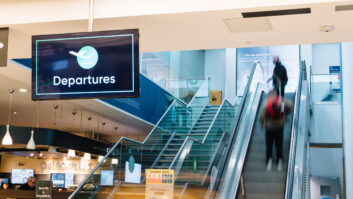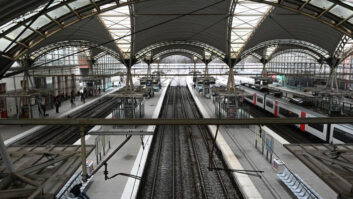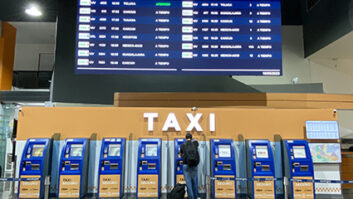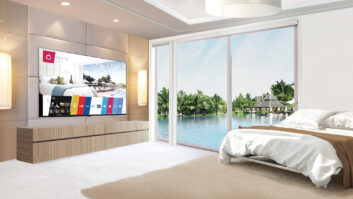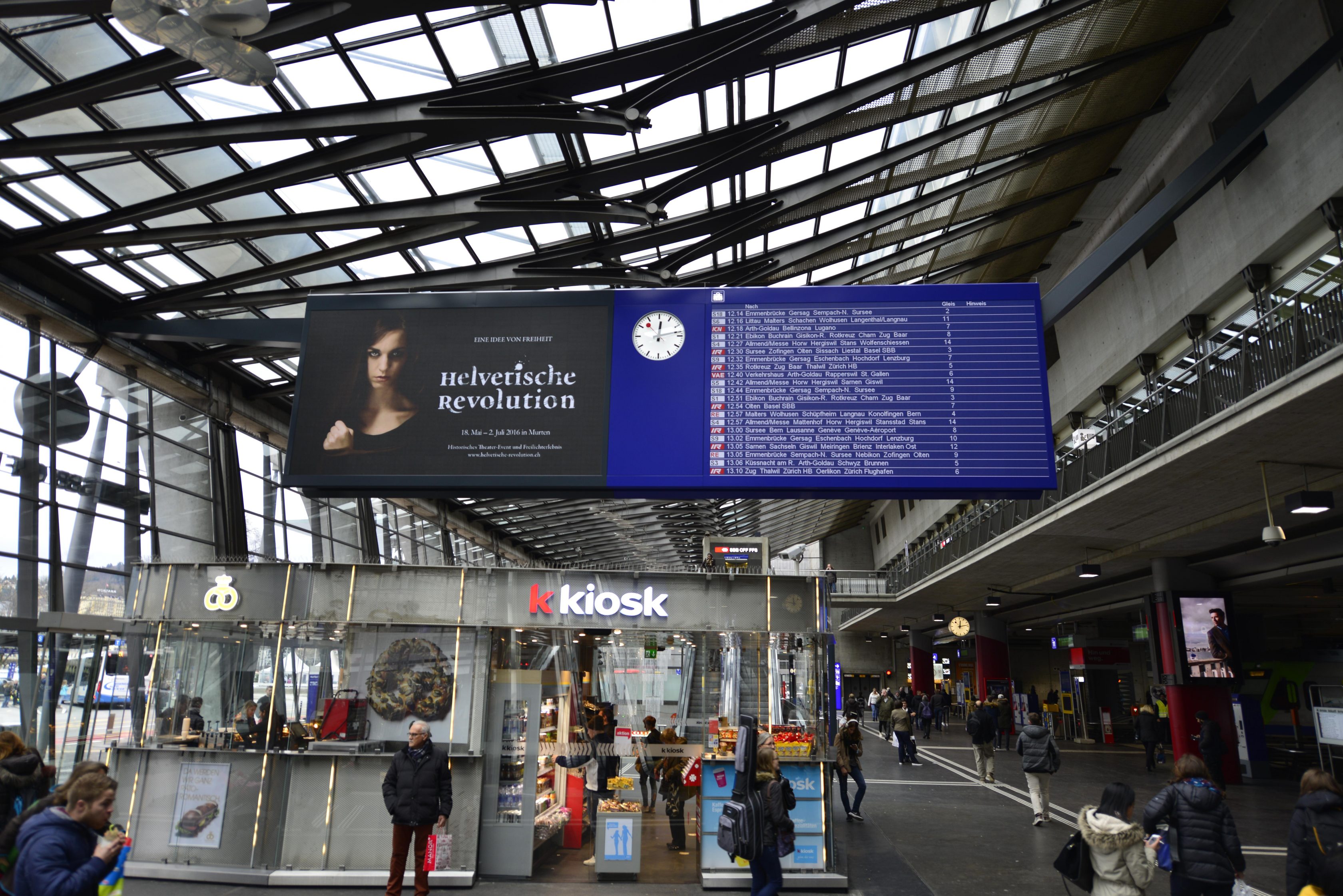
Having previously revealed the technology requirements and safety considerations in these specialised environments, before considering the importance of software reliability, Ian McMurray concludes by looking at redundancy and the opportunities there may be for integrators.
Such are the high stakes when premium advertising is concerned that redundancy is a topic that frequently crops up.
“In addition to very strict selection, test and qualification of suppliers, and targeted maintenance, one of the ways to prevent a dark screen is to build a redundant infrastructure,” notes JCDecaux’s Jérôme Lepage. “Redundancy can be used in both data and power infrastructure. Some of the premium LED producers provide redundant infrastructure built into their screens.
“Equally important,” he continues, “are the initial warranty of the components and possible warranty extensions. The quality of the components and their speed of ageing will also play an important role in the quality of service. Close-at-hand maintenance and relevant expert support will ensure the KPIs, often covered by contracts, are met – and spare parts must also be available and their stock well monitored.”
“Any loss of power at the source is going to cause the screen to go black,” adds Brett Farley, who is director of strategic business development at NanoLumens. “Building in power redundancy to the technology in the display network can minimise potential downtime. Modular technologies such as SMD LED displays have multiple power sources within an individual display. If they are designed with built-in redundancy, one power source can bypass a non-operational power source to re-illuminate the section of the board effectively.”
“Several elements can be designed into the board to reduce the risk of ‘downtime’ or a ‘dark’ screen,” continues Pete Egart, vice president Europe, Middle East, Africa, and Latin America at Daktronics. “At Daktronics, we often design control systems to have automatic redundant back-ups; the feed to the sign will automatically switch to the back-up system in the event of a device failure, or can be manually switched to the back-up system if service or software updates are required. Displays can also be designed with both power and signal redundancy, which ensures if there is a failure of a singular component, only the failed component will be affected. Adding redundant control, power and signal will increase the upfront cost, but is often well worth the investment to avoid penalties and unforeseen costs associated with a failed component.”
There are, of course, other strategies, as Lucy Meredith, UK product marketing specialist for Panasonic Visual System Solutions points out.
“Panasonic’s failover and failback functionality is installed on most of our professional display range,” she explains. “If the main video and audio signals are interrupted, the system immediately switches to one of the alternative signal inputs.
“In addition,” she goes on, “we offer contracted servicing and maintenance with a temporary replacement back-up option depending on the level of service a customer decides to take out.
“For more mission-critical applications, the customer may decide that they want a hot back-up on site, with an identical device to quickly swap out should any issue arise.”
Opportunity
The market for advertising at transportation hubs is both a specialist one and a highly demanding one. Should that deter integrators – or is there an opportunity?
“Currently, this sector is dominated by the main DOOH players,” explains Richard Wilks, aviation business development manager, NEC Display Solutions Europe. “Some of these use audiovisual integrators to deliver projects on their behalf, but due to the fact that working in a transport hub requires high levels of security and certification, they tend to be the more specialist integrators. As digital advertising becomes more mainstream and landlords invest in their own digital media assets rather than relying on the media owners products, then the opportunity for AV integrators with that specialist knowledge will grow.”
“There is definitely an opportunity for AV integrators in the market, but it is very dependent upon how the transportation hub has decided to source their solution,” adds Egart. “Customers seem to take varying approaches to sourcing solutions based on their size and previous experience with AV solutions. Some customers will work with an AV company, and use their expertise to help sort through the options available to them. Other customers will hire a consultant that will write an RFP (request for proposal), sometimes segmenting the integrator from the display companies. Others will choose to keep it in-house with their purchasing department and will only be willing to work directly with manufacturers if they feel they have adequate in-house expertise to evaluate and implement the solutions. Our experience indicates that the best chance for success for the AV integrator would be to get in with the customer early in the purchasing journey to help them find the best solution. It will also be important for the integrator to show they have done their due diligence to help the customer in selecting the appropriate equipment providers and prove that they are partnered with quality suppliers.”
Nacho Perez, senior director, advertising market at Absen Europe is more bullish.
“Without a doubt there is an opportunity,” he says. “Audiovisual integrators have the required technological knowledge for LED products and the expertise in building great visual installations, so combining both of them can deliver extraordinary installations in demanding environments like transportation hubs.
“Many of AOTO’s international projects are installed by audiovisual integrators, under the guidance of one of our engineers,” notes David Wu, CTO at AOTO.
Image is everything
Reliability, serviceability and uptime are key in any high-profile screen installation in which revenue and profitability are the original drivers – and that certainly applies to transportation hubs such as airports, railway stations and so on. But: while excellent image quality is a given in almost any advertising-driven digital signage deployment, the stakes are raised in transportation hubs because more people with more money see it for longer – and because those hubs are highly favoured by upmarket brands to whom image is all-important.
“The quality of an advertising display is a reflection of the quality of the brand,” says Wilks. “Brands will expect the highest level of image quality and accuracy over the length of their contract terms.”
For integrators not already in the business, then, the opportunity may be something to think about – perhaps while they’re waiting for a plane. Unless, of course, they get distracted…
www.absen.com
www.aoto.com
www.daktronics.com
www.jcdecaux.com
www.nanolumens.com
www.nec-display-solutions.com
business.panasonic.eu
